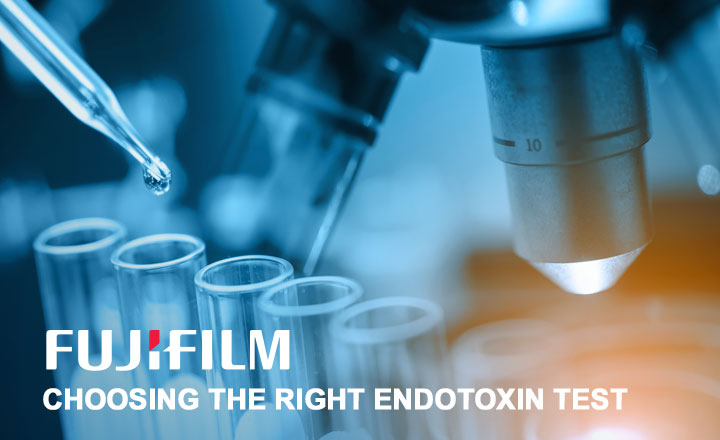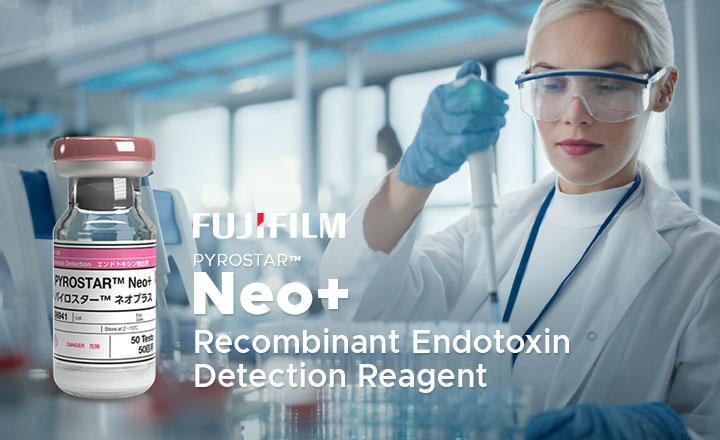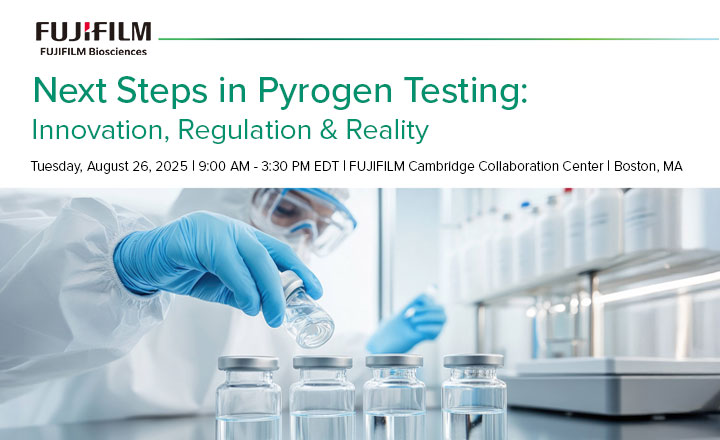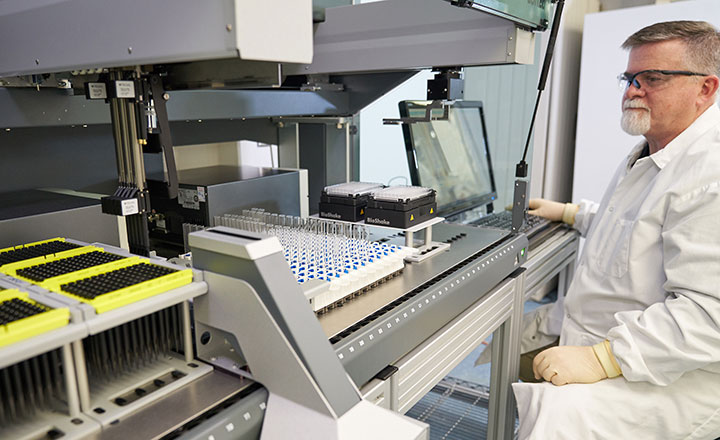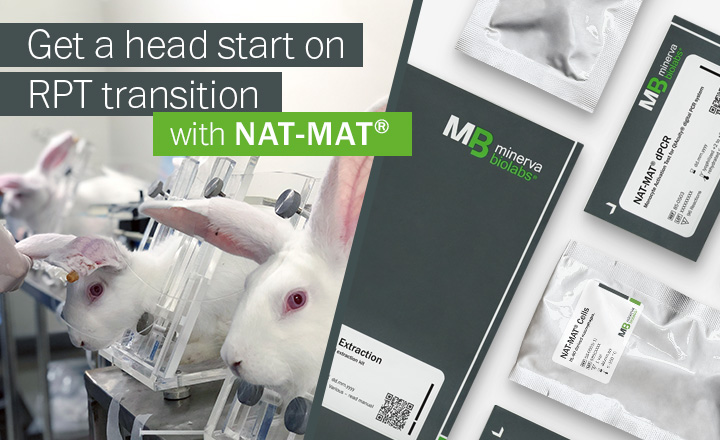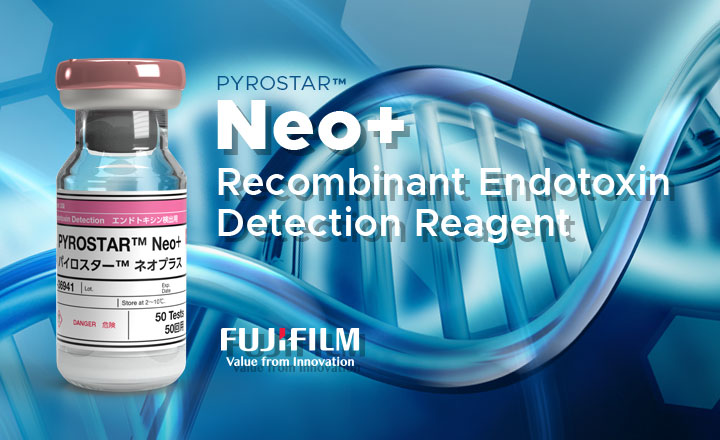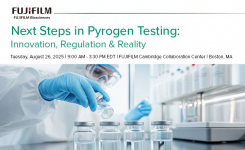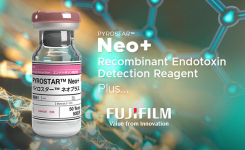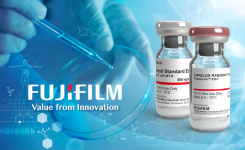There are many variables to consider when choosing what endotoxin testing method to use, and the choice can depend on various factors, such as the sample matrix, the level of sensitivity needed, and regulatory requirements.
For example, LAL (Limulus Amebocyte Lysate) assays are commonly used for aqueous samples, while chromogenic assays are more suitable for protein-rich samples. The sensitivity of the endotoxin method also needs to meet the required detection limit.
In this rapidmicrobiology interview, Timothy Francis and Delaney Novak, Technical Specialists, LAL Division of FUJIFILM Wako, share their knowledge and experience of working with various sample types and can guide customers in making the right decisions for their particular situation.
Q: What are the advantages and disadvantages of the different endotoxin methods, such as gel clot, turbidimetric, or chromogenic?
Timothy/Delaney: Each of the different endotoxin testing methods has multiple advantages and disadvantages. The gel clot is very simple and provides results without the use of any additional equipment or automation. For this reason, it also tends to be very cost-effective for users that have a smaller throughput of samples. However, unlike the turbidimetric and chromogenic methods, the gel clot assay only provides qualitative results. The gel clot assay can only give a “more than” or “less than” value for the endotoxin concentration of the sample. This method also uses an external benchmark, the label-claim sensitivity, that allows the manufacturer’s measured specifications to be confirmed during use.
Turbidimetric and chromogenic assays, however, provide quantitative results and can be utilized for a large throughput of samples. These methods also tend to be more sensitive than gel clot assays. Chromogenic methods can provide high sensitivities that can help a user overcome sample interference with sample dilution. However, these methods tend to require more equipment and instrumentation than the gel clot assay does. Also, the standard that is referenced is subject to dilution and handling errors by the user preparation.
Q: Is there any one endotoxin method that is universally suited for all sample types?
Timothy/Delaney: The endotoxin test method, reagent, and instrument should be carefully chosen based on client testing needs to maximize efficiency in testing. However, the more sensitive a test method is, the greater its resilience to test any samples will be. For example, a chromogenic assay with sensitivity down to 0.0005 EU/mL will allow for high dilutions to overcome interference, almost making it a universal reagent. The drawback, however, would be the additional dilution steps and assay requirements for a water sample, for example, that could be monitored using a simple gel clot test.
Q: How do I ensure that the endotoxin testing method will be appropriate for my sample? Are there any special considerations for cell and gene therapy products?
Timothy/Delaney: In order to ensure that the endotoxin testing method is appropriate for your testing purposes, you should perform method suitability testing first to determine if there are any sources of interference or other issues that can arise. The Test for Interfering Factors, as outlined in USP <85>, is one method suitability test for endotoxin testing. Cell and gene therapy products that have high protein content may need heat or digestion treatment to make the sample suitable, for example. Dilution as well nearly universally overcome interference. Using the available tools, virtually all sample will be suitable for LAL testing.
Q: Is there an endotoxin method that can be adopted without having to perform validation or onsite suitability verification?
Timothy/Delaney: The Bacterial Endotoxin Test is considered validated, and therefore only the specific method suitability requirements for the test are required in lieu of validation. However, when switching between reagents, methods, or when starting bacterial endotoxin testing, method suitability testing should be performed to ensure that the method fits the qualities and needs of your samples.
Q: What is the best way to validate an endotoxin testing method?
Timothy: There are 4 aspects of the verification of the BET to verify method suitability. The Equipment should be properly calibrated and certified, accessories and accessory reagents should be shown to be free of endotoxin and interfering factors (usually confirmation can be provided by certification from the reagent manufacturer), users should be properly trained and qualified, and the Test for Interference should be performed for each sample. These are the four aspects of a correct method suitability testing for endotoxin testing.
Q: How should any PPC (Positive Product Control) failures in routine testing be addressed?
Timothy: PPC failures will be caused by either an unsuitable sample in its current preparation or errors in the test procedure by the user, accessories, reagents, or instrument. Since the criteria has been given that the sample is undergoing routine testing, it is implied that the method has already undergone all appropriate verification. First, all technical aspects of the test should be analysed to determine if the results are a valid representation of the sample. Does the PC and NC have normal results, does any part of the technical raw data have deviations from expected, have any of the accessories or water changed or been contaminated? Finally, if the technical aspects of the test are sound and no cause of an invalid result is determined, an investigation into the sample’s manufacturing may need to be performed to determine the cause of the contamination.
Q: What steps need to be taken to switch to a synthetic reagent for products that need to meet FDA or other regulatory requirements?
Delaney: Currently, synthetic reagents are a non-compendial method. For non-compendial methods, USP <1225> outlines how to go about validation and what analytical performance characteristics are used in method validation. The analytical performance characteristics that must be proven include accuracy, precision, specificity, detection limit, quantitation limit, linearity, range, and robustness.
For users of a recombinant 3-factor reagent, the test will perform very similarly to chromogenic reagent. A validation package that includes data to help validate these characteristics will be available from the manufacturer. Users must prove that the non-compendial method, the recombinant reagent, has the same performance qualities as the compendial method, the LAL reagent.
To make sure your endotoxin method is the right choice for your products, use the Request Information button below to connect directly to the Fujifilm Wako Product Specialists - or visit www.wakopyrostar.com
About Timothy Francis

About Delaney Novak



